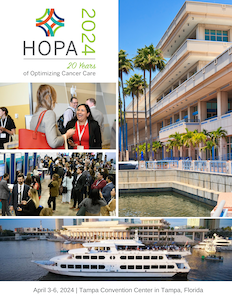Back
Trainee Research
Category: Supportive Care
(084) Evaluation of A Pharmacist-Led Service for Refractory and Breakthrough Chemotherapy-Induced Nausea and Vomiting with Highly Emetogenic Chemotherapy
Friday, April 5, 2024
12:00 PM – 2:00 PM ET
- AL
Andrea Lee, PharmD
PGY-2 Oncology Pharmacy Resident
Kaiser Permanente
Fullerton, California, United States
Presenting Author(s)
Poster Abstract: Background
Chemotherapy-induced nausea and vomiting (CINV) remains a distressing and debilitating side effect of cancer treatment, significantly impacting patients’ quality of life. Despite advancements in antiemetic therapies, a considerable proportion of patients, particularly those receiving highly emetogenic regimens, continue to experience inadequate control of CINV with refractory and breakthrough CINV. Pharmacists, with their expertise in medications and patient care, have the capability to provide comprehensive medication reviews, personalize patient education, and collaborate on interventions with healthcare teams. This study aims to evaluate the impact of a pharmacist-led service and highlight the role of pharmacists in the management of refractory and breakthrough CINV.
Objective
To evaluate the implementation of a pharmacist-led service for the management of CINV for patients receiving highly-emetogenic chemotherapy (HEC) with doxorubicin and cyclophosphamide.
Methods
This is a retrospective study comparing breast cancer patients who were treating with dose-dense doxorubicin and cyclophosphamide and received standard of care for the management of chemotherapy induced nausea and vomiting to patients who received care through pharmacist-led service. The treatment arm included patients who received pharmacy services from November 1, 2023, to February 28, 2024, and the comparator arm with patients who received standard care for CINV management from physicians between April 1, 2023, and July 1, 2023. Retrospective chart reviews were conducted using electronic health records and outpatient pharmacy records. The exclusion criteria included patients < 18 years of age, patients receiving cyclophosphamide and doxorubicin for an indication other than breast cancer, and patients enrolled in a clinical trial. The primary endpoint was rates of adherence between the two arms. Secondary endpoints included response rates of those with refractory and breakthrough CINV, patient satisfaction of the pharmacy service, and types of pharmacist interventions.
Results
Results pending.
Conclusion
Results pending.
References (must also be included in final poster): Van der Vorst MJ, Neefjes EC, Konings IR, Verheul HM. Prophylactic treatment for delayed chemotherapy-induced nausea and vomiting after non-AC based moderately emetogenic chemotherapy: a systematic review of randomized controlled trials. Support Care Cancer. 2015;23(8):2499-2506.
Hughes D, Vose R, Shah B, et al. Pharmacist-Run Chemotherapy-Induced Nausea and Vomiting Management Protocol Improves Patient Outcomes and Benefits Physician Workflow. J Hematol Oncol Pharm. 2020;10(4):190-196
Hesketh PJ, Kris MG, Basch E, et al. Antiemetics: ASCO Guideline Update [published correction appears in J Clin Oncol. 2020 Nov 10;38(32):3825] [published correction appears in J Clin Oncol. 2021 Jan 1;39(1):96]. J Clin Oncol. 2020;38(24):2782-2797. doi:10.1200/JCO.20.01296
National Comprehensive Cancer Network. Antiemesis. https://www.nccn.org/professionals/physician_gls/pdf/antiemesis.pdf . Accessed on August 1, 2023.
Chemotherapy-induced nausea and vomiting (CINV) remains a distressing and debilitating side effect of cancer treatment, significantly impacting patients’ quality of life. Despite advancements in antiemetic therapies, a considerable proportion of patients, particularly those receiving highly emetogenic regimens, continue to experience inadequate control of CINV with refractory and breakthrough CINV. Pharmacists, with their expertise in medications and patient care, have the capability to provide comprehensive medication reviews, personalize patient education, and collaborate on interventions with healthcare teams. This study aims to evaluate the impact of a pharmacist-led service and highlight the role of pharmacists in the management of refractory and breakthrough CINV.
Objective
To evaluate the implementation of a pharmacist-led service for the management of CINV for patients receiving highly-emetogenic chemotherapy (HEC) with doxorubicin and cyclophosphamide.
Methods
This is a retrospective study comparing breast cancer patients who were treating with dose-dense doxorubicin and cyclophosphamide and received standard of care for the management of chemotherapy induced nausea and vomiting to patients who received care through pharmacist-led service. The treatment arm included patients who received pharmacy services from November 1, 2023, to February 28, 2024, and the comparator arm with patients who received standard care for CINV management from physicians between April 1, 2023, and July 1, 2023. Retrospective chart reviews were conducted using electronic health records and outpatient pharmacy records. The exclusion criteria included patients < 18 years of age, patients receiving cyclophosphamide and doxorubicin for an indication other than breast cancer, and patients enrolled in a clinical trial. The primary endpoint was rates of adherence between the two arms. Secondary endpoints included response rates of those with refractory and breakthrough CINV, patient satisfaction of the pharmacy service, and types of pharmacist interventions.
Results
Results pending.
Conclusion
Results pending.
References (must also be included in final poster): Van der Vorst MJ, Neefjes EC, Konings IR, Verheul HM. Prophylactic treatment for delayed chemotherapy-induced nausea and vomiting after non-AC based moderately emetogenic chemotherapy: a systematic review of randomized controlled trials. Support Care Cancer. 2015;23(8):2499-2506.
Hughes D, Vose R, Shah B, et al. Pharmacist-Run Chemotherapy-Induced Nausea and Vomiting Management Protocol Improves Patient Outcomes and Benefits Physician Workflow. J Hematol Oncol Pharm. 2020;10(4):190-196
Hesketh PJ, Kris MG, Basch E, et al. Antiemetics: ASCO Guideline Update [published correction appears in J Clin Oncol. 2020 Nov 10;38(32):3825] [published correction appears in J Clin Oncol. 2021 Jan 1;39(1):96]. J Clin Oncol. 2020;38(24):2782-2797. doi:10.1200/JCO.20.01296
National Comprehensive Cancer Network. Antiemesis. https://www.nccn.org/professionals/physician_gls/pdf/antiemesis.pdf . Accessed on August 1, 2023.

